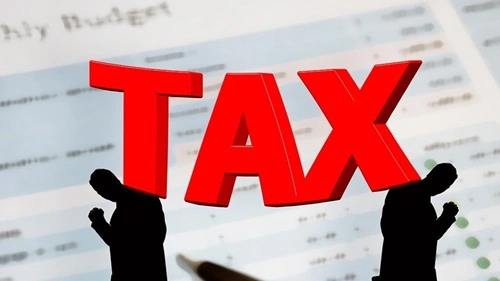India’s net direct tax collections have surged by 16% year-on-year to ₹16.90 lakh crore so far in the financial year 2024-25 (FY25), reflecting the country’s robust economic recovery and improved tax compliance. The latest data, released by the Ministry of Finance, underscores the government’s efforts to strengthen revenue generation through digital initiatives and streamlined processes.
With this growth, the collections have already surpassed the estimates for the corresponding period last year, indicating strong momentum in corporate and individual tax contributions.
A Breakdown of the Numbers

The ₹16.90 lakh crore collected so far includes contributions from:
- Corporate Income Tax (CIT): A significant chunk of the revenue came from CIT, driven by strong corporate earnings across sectors such as IT, banking, and manufacturing.
- Personal Income Tax (PIT): PIT collections have also grown, buoyed by higher salaries, bonuses, and expanding employment in urban and rural areas.
Gross tax collections, before refunds, stood at ₹18.60 lakh crore, marking an 18% increase compared to the same period last year. Refunds issued during this period totaled ₹1.70 lakh crore, which is 15% higher than the refunds processed in FY24.
Factors Driving Growth
Several factors have contributed to the increase in net direct tax collections:
- Economic Recovery: India’s economic growth, projected to remain above 6% in FY25, has created a favorable environment for businesses and individuals, boosting taxable income.
- Enhanced Tax Compliance: The implementation of digital tools, such as the Income Tax Portal and Annual Information Statement (AIS), has improved transparency and reduced tax evasion.
- Corporate Earnings: Strong earnings in key sectors, especially IT, financial services, and manufacturing, have bolstered corporate tax contributions.
- Broadening the Tax Base: Ongoing efforts to bring more individuals and entities under the tax net have yielded positive results, as seen in the rising number of tax returns filed.
Government’s Digital Push
The government’s focus on digitalization has played a pivotal role in achieving these robust numbers. The introduction of initiatives such as:
- Faceless Assessments and Appeals: Ensuring transparency and reducing harassment in tax assessments.
- e-Filing System Enhancements: Simplifying the filing process and reducing errors.
- TDS (Tax Deducted at Source) Monitoring: Strengthening real-time tax collection and ensuring compliance.
These measures have not only enhanced efficiency but also built trust among taxpayers.
Sectoral Contributions
- IT and Technology: With tech giants reporting strong revenue growth, the IT sector has been a significant contributor to corporate tax collections.
- Banking and Financial Services: Higher profitability in the financial sector has contributed to increased tax payments.
- Startups and SMEs: The growing formalization of businesses, particularly in the startup ecosystem, has added to the personal and corporate tax base.
Fiscal Implications
The surge in tax collections has important implications for the government’s fiscal health:
- Revenue Generation: The increased collections provide the government with greater fiscal space to invest in infrastructure, social welfare programs, and healthcare.
- Deficit Management: Higher revenue can help narrow the fiscal deficit, which the government has targeted at 5.9% of GDP for FY25.
Challenges Ahead
While the growth in collections is encouraging, challenges persist:
- Tax Evasion: Despite improved compliance, certain segments of the economy remain outside the tax net, necessitating continued vigilance.
- Global Uncertainties: Economic slowdowns or disruptions in key markets could impact corporate earnings and, consequently, tax revenues.
- Sectoral Disparities: Some industries, such as MSMEs, are still recovering from pandemic-related shocks, impacting their tax contributions.
Expert Opinions
Economists and tax experts have lauded the government’s efforts to enhance collections. “The 16% growth reflects a well-performing economy and effective tax administration. However, the challenge will be sustaining this momentum amid global uncertainties,” said a senior economist at a leading think tank.
Tax consultants have also noted that increased digitalization has made compliance more seamless for individuals and businesses, encouraging more taxpayers to file returns.
Looking Ahead
The government is on track to achieve its direct tax collection target of ₹18.23 lakh crore for FY25, with only a few months left in the fiscal year. Policymakers are expected to continue focusing on digital reforms and broadening the tax base to sustain the growth in collections.
Conclusion
The 16% growth in India’s net direct tax collections to ₹16.90 lakh crore highlights the resilience of the country’s economy and the success of government initiatives aimed at improving tax compliance. As the fiscal year progresses, this upward trend could serve as a critical pillar in funding India’s development goals, ensuring robust public investment in key areas while maintaining fiscal discipline. For taxpayers, the results underscore the importance of transparency and innovation in fostering a more efficient and inclusive tax system.
